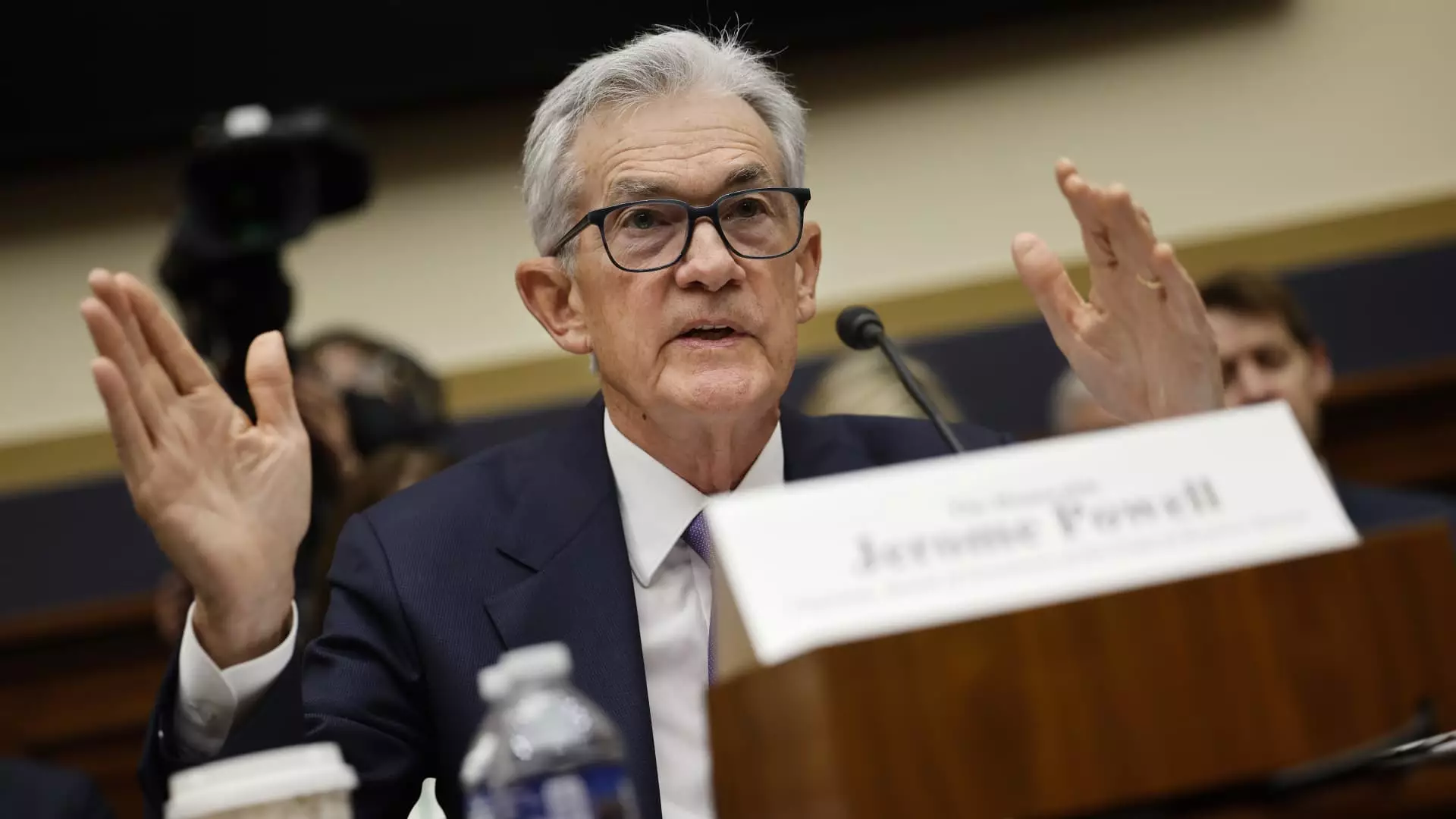In the landscape of economic policy, the Federal Reserve stands as a pivotal entity regulating monetary stability and influencing broader financial conditions. Recently, Federal Reserve Chair Jerome Powell addressed the Senate Banking Committee, where he reaffirmed the central bank’s determination to tackle inflation—a persistent concern that continues to hover above the targeted threshold of 2%. During his discourse, Powell characterized the U.S. economy as “strong overall,” asserting that although inflation pressures are easing, they remain elevated. This setting has prompted the Fed to adopt a cautious approach regarding interest rates, demonstrating a reluctance to make rapid adjustments to monetary policies.
Powell’s statements resonate with a careful balance that seeks to maintain economic momentum while addressing inflationary concerns. He articulated, “With our policy stance now significantly less restrictive than it had been, and the economy remaining strong, we do not need to be in a hurry to adjust our policy stance.” This encapsulates the Fed’s intricate balancing act, as they recognize the dual imperatives of fostering economic growth and constraining inflation. By abstaining from hastened policy shifts, Powell highlighted the potential risks of both overly aggressive easing and excessively measured approaches. The prospect of reversing course too quickly could thwart progress in combatting inflation, whereas a slow response could undermine employment and economic vitality.
Powell’s appearance is significant, particularly in light of the broader political landscape. In his remarks, he did not delve into the controversial tariff initiatives spearheaded by President Donald Trump, which aim at reshaping trade dynamics with major global partners. The tariffs, ostensibly intended to create a fairer economic environment and address foreign policy challenges, paint a complex picture for the Fed. This adds a layer of unpredictability to the economic forecasts and policy decisions ahead. Powell’s ability to navigate these political currents will be critical, especially when lawmakers pose complex questions regarding tariffs and their potential fallout on economic stability.
Market participants are deciphering Powell’s recent pronouncements, leading to a collective anticipation that the Fed will likely maintain its current interest rate stance through the summer months. With the benchmark federal funds rate hovering between 4.25% and 4.5%, investors are keenly aware of how these rates impact borrowing costs and investment strategies. The Fed’s current posture reflects an attempt to cultivate an environment conducive to sustainable growth while surveying evolving economic indicators. The Federal Open Market Committee’s decision to retain the rate during their late-January meeting underscores the intentionality behind this policy steadiness.
As Powell articulates, the Fed’s approach is still deeply rooted in its dual mandate—promoting maximum employment while ensuring price stability. His continual acknowledgment of risks to both dimensions suggests a nuanced understanding of the economic landscape, marked by uncertainties stemming from both domestic and global arenas. The delicate equilibrium maintained by the central bank is not without challenges, as dual pressures from inflation and employment metrics oscillate and evolve. This requires vigilance and adaptability from the Federal Reserve as it scales potential threats to achieve its overarching goals.
Looking forward, the Federal Reserve’s strategy under Powell indicates a commitment to a methodical and measured response to inflation and economic performance. As uncertainties proliferate, particularly in light of external political pressures and evolving economic conditions, the Fed must remain both responsive and resilient. The echoes of Powell’s messaging illustrate the complexities of managing monetary policy in a fluctuating economic climate. As the Fed continues its assessments and engages with Congress, the outcome of these discussions will likely shape the anticipated trajectory of the U.S. economy—an intricate dance requiring both foresight and careful calibration. The central bank’s decisions in this unpredictable environment will be pivotal, not only for domestic economic health but also for global economic dynamics.

